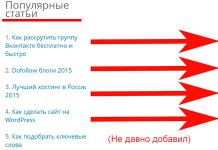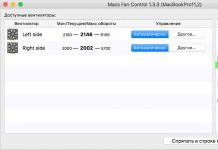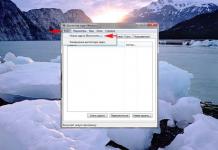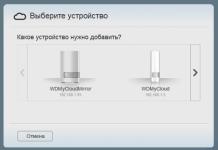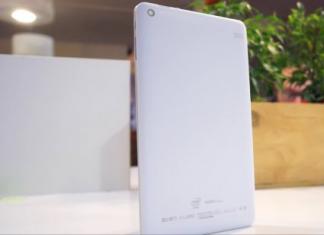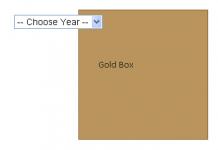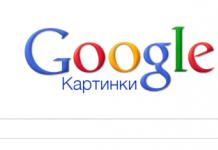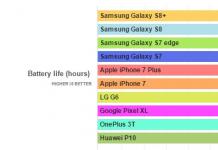Instead of an epigraph: I remind you that there is just over a week left before Sergei Koksharov’s master class (Devaka.ru) and there is still time to register.
Step two - add links from relevant pages
The bottom line: using Yandex or Google search, we look for pages that are relevant to a specific search query and put links from them to the desired landing page.
For example, my landing page is , the keyword is “on-page optimization”.
I sort blog pages by relevance to this phrase using the query:
It can be seen that our landing page comes first - we skip it. The pages that rank after it are also relevant to the specified query and can be used to link to the main landing page.
If you want to use only a specific section for linking, indicate it in the request instead of the domain. For example, if I want to put links only from the “SDL” section, I use the following request:
.
As a result, I get a list of pages relevant to the request only from the specified section:
This is often done by commercial sites that do not want to put links from pages that are important for users and “set up” special sections for linking (“articles”, “useful”, etc.). The risks of creating such information sections are outlined in the article. There is no universal recipe - it all depends on the semantic core, the number of landing pages and all indexed pages of the site. For large sites, you can start with 5-10 links for each landing page and see the results. If your positions have grown, you are doing everything right and you can continue in the same spirit.
What is the maximum number of links that can be placed on one page?
It often happens that the same page that you want to use for linking is relevant to several queries. I believe that in this case you can place several internal links on it. The maximum number depends on the amount of text on the page; I usually put no more than 3-5 links.
What anchors to use?
I try to use several anchor options. If a non-anchor link is more suitable for the context, I put it.
Such internal linking requires much more effort and time than the automatic method. But it has a big advantage - since the links are placed from relevant pages, they are really interesting to the user - they are clicked on, the viewing depth and the visitor’s time on the site increase.
Page linking is present on every website, but not everywhere it is done correctly. This results in incorrect distribution of weight across pages and also worsens the behavioral factor. Therefore, all successful sites that do proper page linking are in the top for their keywords. Now let's figure out how to do the correct linking.
What is website linking and why is it needed?
Relinking the site They call the connection of pages on one site using links. Such a link will help the user better navigate the resource, which subsequently forces the user to view more pages.
Links also transfer weight to the pages they link to. This allows you to correctly distribute weight on the site and gives a signal to search engines which pages are more important on a given resource. Pages that have more link juice rank slightly better than others.
Another correct distribution of weight on the site creates more new pages. But this depends on which linking method you choose for promotion.
How to link pages
When you go to any page of the site, you can see links leading to other pages. They can be in the menu, in the text itself, in comments or in pictures. And here are the main places that are used for links:
1. Site menu
The menu, as a rule, is repeated throughout the site and contains a decent number of links. Professional SEO optimizers, as a rule, put links in the menu in the “nofollow” tag. To prevent weight leakage to other pages.
Chip #1— Some optimizers tailor the entire site to ten key queries and deliberately do not close the menu to promote those same pages. I implemented something similar at home, look at the “popular articles” section.  Surprisingly, each of the articles is in the top for its own keywords, partly due to this type of linking, where 100-plus pages link to specific 5-10 pages.
Surprisingly, each of the articles is in the top for its own keywords, partly due to this type of linking, where 100-plus pages link to specific 5-10 pages.
2. Bread crumbs
Breadcrumbs or breadcrumbs, which are designed to improve the usability of a site, also contribute to the transfer of weight to other pages. But they transfer weight to the main page and adjacent categories, which is very useful for linking.
I also recently found out in my experiment that the transitions are from search engines, so don’t forget to optimize them on your website.
3. Displaying relevant pages
Relevant pages or otherwise similar articles are displayed closer to the end of the article/product and the most similar pages in content and topic are selected. Not only for the transfusion of reference mass, but also for the sake of.
4. Site map A sitemap comes in two formats: html (a page for users) and sitemap.xml (a page for better indexing by search engines). Any site with old school SEO has both formats. It turns out that the site map links to each page individually, which is very good.
A sitemap comes in two formats: html (a page for users) and sitemap.xml (a page for better indexing by search engines). Any site with old school SEO has both formats. It turns out that the site map links to each page individually, which is very good.
5. Linking in the text
The most effective method of linking pages is with the help of the article itself. After all, the search engine takes into account not only the content of the anchor text, but also the surrounding link text. The greater the relevance, the higher the quality of linking.
Ways to link a site
On the Internet you can find almost two dozen different schemes and methods of linking, but not all are effective. Therefore, let's look at the 3 best linking options, as well as under what circumstances they should be used.
1. Ring method The most popular and discussed method is ring linking. It turns out that each page links to the next, and the last page links to the very first. Therefore, the result is a complete interlinking along the ring.
The most popular and discussed method is ring linking. It turns out that each page links to the next, and the last page links to the very first. Therefore, the result is a complete interlinking along the ring.
It is used when promotion is entirely based on LF (low-frequency) queries. The chance of getting to the top increases due to the even distribution of the weight of the pages of each product or article on the site. But at the same time, there is no promotion of categories and the main page (MF and HF queries).
2. Star method By the way, this linking method was originally used by Wikipedia and its Page Rank was 10/10. What are the advantages of this method? Each page links to each other in an arbitrary chain, resulting in more pages linking to each other.
By the way, this linking method was originally used by Wikipedia and its Page Rank was 10/10. What are the advantages of this method? Each page links to each other in an arbitrary chain, resulting in more pages linking to each other.
This method is perfect for those who do not single out some pages for promotion, but try to promote everything at once. This is an aggressive type of linking and the more pages with content, the more effective it will be.
3. Ladder method (hierarchy) Ladder linking involves increasing the number of pages that link to one. When one page links to four others. And those four pages link to one single (promoted) one. Forming a decent amount of weight for a single page that links to the first page, forming a closed chain.
Ladder linking involves increasing the number of pages that link to one. When one page links to four others. And those four pages link to one single (promoted) one. Forming a decent amount of weight for a single page that links to the first page, forming a closed chain.
Works great and doesn't require much effort to implement. As a rule, a chain of links is built on one topic, where one page is a continuation of another. Suitable for those who are trying to promote HF and MF requests.
Chip #2— in addition to the traditional types of linking, there is also a combined type of linking with a star and a ring. I believe that this is the most effective way to link a site!
Scheme: 
 Once you've chosen one of the schemes above and applied it to your site, you'll need to know how much weight each page gets. After all, the greater the weight of the page, the better the position.
Once you've chosen one of the schemes above and applied it to your site, you'll need to know how much weight each page gets. After all, the greater the weight of the page, the better the position.
To check the weight of website pages, you need to use the Page weight program; you can download the free version, but it will be limited. Or use the program, which is also free and more advanced than PW.
There is also an online service that can calculate weight, but it takes a long time and costs money. It’s called, it can show page weight on 50 pages for free, everything else is paid.
Popular mistakes when linking a website
There are some rules of linking that should not be violated. Because all the work you've done can suddenly turn to dust. And it happens that the site may also fall under the filter for over-optimization!
Site linking rules:
- No more than 3 links per 1,000 characters in the text and no more than 50 pcs. to the page.
- Product or article pages should not link to each other.
- The link anchor should be relevant to the keywords of the page being linked to.
- If the link is in a picture, then be sure to include a keyword in the alt tag (it is better to avoid links in pictures).
- You should not additionally highlight or underline links in the text.
If you use all the rules for linking and go through the entire site, in the end, in addition to the correct linking of sites, you will get a good increase in search rankings and more views per visitor.
We've released a new book, Social Media Content Marketing: How to Get Inside Your Followers' Heads and Make Them Fall in Love with Your Brand.

Linking is...
...linking pages through links. Links can be placed both from one site to another and within a site.
There are external and internal.
External is the linking of pages of several sites, when a link from one leads to another.
Internal linking is the linking of pages within one site. It is one of the most important factors in internal optimization. This is due to the fact that the static weight of the page is transmitted through links; accordingly, with the help of well-configured linking, you can improve rankings for high-frequency, mid-range and especially low-frequency queries.
Let's talk about the internal one.
How to properly link a website: the basics
When distributing requests, you must adhere to the following rule: all high-frequency requests go to the main page, high-frequency requests go to secondary pages (sections), and low-frequency requests go to third-level pages (product cards, articles, etc.).

There are three basic linking schemes:
“Ring” - all the weight is transferred to low-frequency requests, and they, in turn, are interconnected.
“Star” - uniform distribution of weight throughout the site. When the main page, sections (categories) and products are on promotion.
“Ladder” (Hierarchical) - weight is transferred to mid-frequency queries. Promotion of sections and categories.
- Cross-links. Links from the site bar, horizontal menu and footer should lead to all the most basic sections and subsections. Moreover, it is desirable that they be accessible not only from the main page, but also from other pages.
- Bread crumbs. Not only helps the user not to get lost on your site, but also transfers weight from child pages to parent pages. And if you use keywords in them, you can also increase relevance.
- Link from logo. Place a link from your site's logo to the home page in the format: site.ru (or www.site.ru, depending on the settings of the main mirror). Write keywords in alt and title.

- Add a sitemap (not to be confused with sitemap.xml). Having a site map significantly speeds up the indexing process. In addition, you can link to it from the 404 page. If there are too many links, then you can clear the map of pages like “cart” and “personal account” and leave only landing pages.
- Link promoted pages to each other. Thus, you can extend the effect of external links (which are often difficult to find, due to the fact that high-quality external links are not cheap) to other pages of the resource.
- Place links correctly in the text:
There should not be too many anchor links in the text.
There are exceptions when the link is very “on topic”, or the text is too large and a slightly larger number of links will not be very noticeable. But in most cases, you shouldn’t overdo it with links, because this one can not only be visually repulsive, but also be considered spammy. Follow the rule of no more than 3 links per 1000 characters and no more than 50 links per page.
Link anchors should be different.
Links with repeated anchors can be “glued together” and then the transfer of weight will be cut down, in addition, a large number of links in text descriptions with the same anchor can be considered spam by search engines. Come up with different texts for internal linking and do not forget about relevance.
- Create a blog for your resource
Create a section on your website to post high-quality and thematic articles that may be of interest to your user. Articles should be tailored to information requests that can be selected in Yandex. Wordstat and Google Planner. Place internal links from them to the promoted sections and increase the weight of the promoted pages. - Link old content to new content
Are you adding new content? Wonderful. Place links from it to old pages, and from old to new ones. And you will be happy. New content will be indexed faster, and old content will improve relevance. - Also remember that pages should not link to themselves and you should not additionally highlight link anchors in the text.
It is necessary to place links correctly. Internal linking is a user's guide to the site, allowing him to save time searching for the necessary information. The search robot thus gets an idea of the site structure. Internal linking occupies a crucial place in SEO optimization. And it is an effective method of website promotion, due to which you can significantly increase the site’s position.
Hello, friends!
Linking website pages is one of the many internal factors that can really help a website promote itself by linking pages to each other.
Therefore, I decided to write a very detailed guide on this topic and address most of the most common questions. You won’t be able to do without some very cool information that will help you understand the deeper meaning of linking.
Objectives and where it is effective
Linking of website pages is one of the strongest factors involved in the ranking of search results. It is the linking of internal pages of a site to each other in order to distribute static weight between documents and encourage the visitor to move on to studying other materials using internal links.
Internal linking can play both into your favor and in the direction of pessimization of the site (lower rankings). Therefore, it must be approached carefully and wisely. Do not be afraid under any circumstances, as everyone will have to work with it. Another thing is “how to work?”, manually or automatically? I will consider all these points further.
Effective in the following cases:
- Adding queries to the TOP - when there are already pages in the TOP 10-20, you can push them to higher positions by placing links to them from other documents in order to add static weight to them;
- Comprehensive increase for a large number of requests - by making a competent connection between the site’s pages using the necessary anchors, after re-indexing the resource, they will begin to rise to higher positions. In the case of low frequency queries, it is more than possible to get into the TOP without purchasing external links;
- Directing traffic to profitable pages - Every site has priority landing pages that are profitable to direct visitors to. These could be pages with affiliate links to sell someone else's products. It is logical to put a link to such a page from pages with a large number of visitors so that more visitors see your offer.
Basics
The basics include 3 rules that you must learn before starting practice.
- Internal linking is most effective when it is clickable. That is, a link placed in a document should not be for show in order to add static weight to the document. If it is placed only for this purpose, then over time the effect of such a link will decrease. If the link is clickable, then search engines understand its importance and usefulness. Such a link has a tremendous effect;
- The best anchor for linking is the anchor of the key phrase of the page to which we are linking. This will allow you to add weight exactly for the desired keyword and the page should rise in positions for exactly the required keyword. But it is very important that the anchor in the text does not compromise the readability of the text;
- Incorrect linking often leads to pessimization of the site - as I said above, instead of advantages, you can also get disadvantages in the form of a decrease in positions. Therefore, you should adhere to some important rules.
Ways to build linking
Now we could go deeper into the schemes, but they are not so important, since they are quite difficult to implement and in most cases you will not succeed. The most competent option is the ring version, in which all the pages are linked into a ring and form one chain.
From the picture above you can see that each previous page links to the next, and the last one links to the first.
The great advantage of this scheme is the uniform distribution of static weight between all documents, which will allow uniform progress in the PS. It will not be the case that some pages have a lot of weight, while others exist just for show.
The disadvantage is that if even one page falls out, the entire circuit is torn and static weight is lost. Therefore, pure circular linking cannot be achieved. We will also have to make other connections that will connect the documents with other schemes, so that if a page falls out, the weight is retained and the page is “in use.”
Well, now to the methods that you need to use to connect pages with each other with links. First of all, it is worth understanding that there is manual and automatic linking.
The manual method is implemented by placing links on each page either with html tags or using engine tools (for example, WordPress) using functions in the formatting panel in the page editor.
Both manual and automatic internal linking must be present on the site and they must work together. But what goals do we seek from each type? We begin in more detail about each construction method below.
- Manual method of binding according to the meaning. Involves placing links when it is really necessary and has logic;
- Automatic method using linking plugins. They link pages by relevance, that is, by similarity to each other. In my opinion, there are 2 most successful solutions:
- Plugin
- Plugin
For both, I wrote detailed instructions with video tutorials. Both options have the ability to select related post styles at the end of each post. At the end of the article you can see what this block looks like with the Yet another related posts plugin.

This automatic linking is the most effective, since it has the highest click-through rate and pages are linked not just any way, but according to the highest percentage of similarity.
By the way, the Related posts plugin has a very cool functionality that allows you to change links in a given box of similar posts. In this way, you can experiment and create links on each page of the site that will be as clickable as possible. It is very important.
- The next option is manual linking by relevance, based on search engine suggestions. This method is the most correct and most labor-intensive. It involves searching for the most relevant pages of a site using a specific keyword and placing a link to the desired document on it. In practice, this looks like this. You go to the desired search engine (under which you link pages) and enter the address of your site with the desired key phrase, under which you should find the most targeted (relevant) pages for further linking.

The first link will always be the article itself to which we want to link. Let's look at the following pages. They will be sorted by relevance in descending order. The snippet will highlight those phrases and words that can be used as an anchor when we place links. But we need an exact occurrence of the keyword, that is, in the form as it is, without changing the endings or diluting it with other words.
In the image you can see that individual words that are included in my key phrase are highlighted. In this case, I need to go to this page, from which we will create a link, and slightly change its content so that the key is in a direct entry. This can be achieved by adding or changing existing sentences, or by adding a line recommending an article at the end of the article.

This option is very good, since such a link is present at the end of the material at the border of the visitor’s decision about further actions on the site. After reading the material, he decides whether to leave the site or stay. We push him to one more material on the topic. If it is possible to place a link inside an existing text, then do it without question, but then make sure that the key phrase is inside the text without compromising readability.
- The next method of construction is random (random) internal linking. It is implemented, as a rule, by the same plugins. I once had a striking example of such an implementation and I described it in an article about . There is an implementation option where links are placed randomly and each time the page is accessed, the block of similar entries changes. This option is suitable for .
- First, install one of the plugins to enable automatic linking. I gave examples above with links to detailed instructions for setting them up;
- Secondly, when you publish at least 100 texts, start looking for the most relevant 3 documents under each page in order to leave a link from them as an anchor with a keyword in a direct entry. To search for relevant pages, use the results of the desired search engine (site:site.ru keyword).
Common Mistakes
- Link from the page keyword. Quite a difficult point. You write each article using keywords and use them a certain number of times on the page, performing a competitor analysis. If the average number of keys is 3 after analyzing competitors, then there is no need to put a link in the text from one of these used keys, since after that it will not participate in determining the relevance of the page. If you need a link from such a keyword, then add part of the text with the same key and make it a link;
- More than one link from a page to the same document - you should not put several links to the same page. A damping effect will occur and less weight will be transferred. Only one link per page;
- Overloaded pages - too many links to one document within the site. Such a page will have too much static weight, which could be distributed more evenly and give a more powerful boost to more pages;
- We forget to pump up the latest documents - the site should never stand still and as the articles grow, the linking should be improved. New articles should also participate in it. This is the most labor-intensive process, since when new materials appear, you have to turn to old ones.
Scheme for placing links to other pages
Here I will give some tips that should be used together to make linking work.
- 3 links at the end of each post using an automatic linking plugin;
- Manual placement based on relevance from search results. Try to use no more than 10 links from the document, since a large number of them interferes with readability;
- We refer to one document by 3 links. This is ideal so as not to pump too much;
- After pages reach the TOP 10-20, we add 1 more link to them to add weight. After re-indexing the site, we check the positions. Was there an effect?
- If possible, check the clickability of links, since clickability = effectiveness. If the links are not working, replace them and again track the click statistics;
- As you accumulate texts, update the linking.
At the end of this material, I would like to give a couple more tips that will certainly come in handy.
- First, try to set up tracking statistics of clicks on the links provided. Links should be present for a reason, but have an effect;
- Secondly, track traffic counter statistics for search phrases. There are many transitions from a search not based on the main keywords, but on additional ones (dilutions, modified ones). If there are such bold queries, then also pump them up with internal links with appropriate anchors;
- Third, try to achieve click-through rates at all costs. If these are manually placed links, then links in the first paragraph work well, as well as at the very end of the text. If this is a block of automatic links (similar posts), then make them attractive. Don't make a simple list of links. Make thumbnails as it attracts attention. It is also logical to place links next to images, which also catches the eye.
That's all for now, friends! This is how the material came out. I hope that you will use all the information in the article when you link your materials on the site. I hope that I have given you a deeper meaning and now linking for you is something more than simply placing links, which we see on most resources. At the end of the article there is a video on the topic from experts.
All friends! If you have any questions or corrections, write them in the comments. See you in touch!
Best regards, Konstantin Khmelev!
Many webmasters and SEOs are familiar with the concept of linking. This term refers to the placement of internal links from one site page to another to transfer more weight to more significant pages. However, when working directly with a site, many questions arise, and the main one is: “What is competent linking?”, implying the fact that there is also “illiterate” linking. Let's try to understand the literacy of internal linking of website pages.
User's point of view
From the user’s point of view, well-linked website pages make it possible to easily and simply navigate the site, saving the visitor’s time searching for the necessary information.
Search robot's point of view
Navigation is also important for a search robot to have an idea of the site structure. However, internal links also affect the anchor list generated by bots and the static weight of pages ().
A competent linking can be called one that optimally combines compliance with all three requirements:
- Navigation. Its convenience and minimum levels of nesting of any page on the site.
- Static weight. The most significant pages should have the most weight.
- Link weight. The text of the link on the donor page should make clear the subject and meaning of the content on the acceptor (for both the bot and the user).
Let's look at each of these points.
Site navigation with proper linking
A site that has more than one page has navigation, with the help of which users and search bots wander around the resource, studying it in detail. If the navigation is designed correctly, then any page of the site is no more than 2-3 clicks from the main page, since the higher the level of nesting of a page, the less attention it receives due to its inaccessibility. With proper navigation on the site, there are no pages that cannot be reached by following its internal links.
The easiest way to create good navigation is to place a menu of sections (subsections) that contain links to informative pages:
On complex sites (including portals), it is advisable to use techniques such as “breadcrumbs” and “tag cloud”. In this case, even the oldest pages will be no further from the main page than 3 clicks away.
Why is it so important to have a minimum of page nesting levels? The fact is that with a large level of nesting, you can wait a long time for pages to be indexed, without waiting in some cases. The priority of such pages is low and even if they get into the index, they will be updated very, very rarely.
Static weight distribution
Agree that the most significant pages of the site that you promote should have the greatest weight! Using interlinking, you can direct static weight to a particular section, home page or other pages of the site.
Where to direct the weight depends on what type of requests you are promoting the site for. If this is a HF (high-frequency) request, then most likely it is highly competitive, so it is better to optimize the main page for it; it usually has maximum internal static weight, since all pages in the menu link to the main page.

For medium-frequency queries, it is better to promote second-level pages; you can put links on them from the main and internal pages, increasing the static weight of sections.

You can also wisely distribute weight to third-level pages for low-frequency queries, linking to them from sections and the main page.

If you have only one request for promotion, try to have as many links as possible to the promoted page from your own internal pages of the site. Proper linking from the point of view of redistributing static weight implies its maximum concentration on promoted pages.
Link weight
It is clear that links that lead to promoted pages should have keys in the anchor, but there is a little trick here that is missed by some optimizers. Imagine that third-level pages (articles, news, blog posts, etc.) are linked to each other, and there are also links to them from the main sections. In total, for each article we have at least 2 links: one from a section, the second from another article (there may also be links from the main page or several from article pages). It would be wise to use the key in a different case for each link.

Thus, competent linking means the optimal combination of its three components: competent navigation, competent weight distribution and competent placement of anchors.



